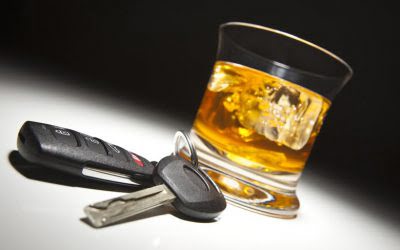Contents
“Prevalence of College Drinking.” College Drinking Prevention, NIAA, /statistics/prevalence.aspx. In the last 5 years, the number of college students that use marijuana has increased by 7 percent. An often overlooked preventive factor involves the continuing influence of parents. Unfortunately, although the standard drink (or alcoholic drink-equivalent) amounts are helpful for following health guidelines, they may not reflect customary serving sizes. In addition, the percentage of pure alcohol varies within and across beverage types (e.g., beer, wine, and distilled spirits). She loves to passionately research, explore and write about substance abuse and treatment.

A little less than 2,000 college students ranging from 18 to 24 years old die from unintentional, alcohol-related injuries each year. A large percentage of college students consume alcohol by binge drinking. should you go back to rehab after a relapse Binge drinking is defined as when a person consumes an excessive amount of alcohol in a short timeframe. For men, binge drinking involves drinking five or more alcoholic beverages in two hours.
What is “Binge Drinking?”
There is no ‘type’ of drug addict, as substance abuse can affect anyone. Get professional help from an online addiction and mental health counselor from BetterHelp. As use falls for that drug, so does the effort to reduce its use. This can then lead to an ensuing lack of education and a resurgence in abuse of that drug.

From the 1970s on, rates of alcohol consumption and binge drinking have remained fairly constant. College students have always represented a large portion of the population abusing drugs and alcohol on a regular basis. The college years are some of the most popular times to experiment with alcohol. Roughly 80% of college students – four out of every five – consume alcohol to some degree. It’s estimated that 50% of those students engage in binge drinking, which involves consuming too much alcohol in too little time.
Signs Of Substance Abuse In College Students
Young adults between the ages of 18 and 24 who are in college are more likely, compared to their non-college peers, to drink to excess. This may be due to the wide availability of alcohol around college campuses, increased social pressure to drink, less structured time, inconsistent enforcement of underage drinking on and off campus, and stress related to academics. Students involved in specific social organizations, especially fraternities or sororities, are more likely to drink alcohol and binge drink compared to their peers. In fact, college students have higher binge-drinking rates and a higher incidence of driving under the influence of alcohol than their noncollege peers. Within the last couple of decades, college students have started consuming more hard liquor than beer. Rather than drinking to socialize, an increasing number of young adults are drinking to get drunk.
Neither Addiction Group nor AAC receives any commission or other fee that is dependent upon which treatment provider a visitor may ultimately choose. We have strict sourcing guidelines and only link to reputable media sites, academic research institutions and, whenever possible, medically peer reviewed studies. College Drug Abuse vs Addiction The difference between abuse and addiction can mean life or…
This means it will require you to drink more in order to get the same high. Some rehabilitation programs are geared specifically toward adolescents and young adults. There are sober frats and sororities that support ongoing recovery.
- It’s up to the educators, parents, and students themselves to work together to keep college campuses safe and healthy.
- This involves committing a crime, no matter how minor it may be, that a person wouldn’t have committed if they were sober.
- The interventions are designed to change student knowledge, attitudes, and behaviors related to alcohol so they drink less, take fewer risks, and experience fewer harmful consequences.
- For those seeking addiction treatment for themselves or a loved one, the Addiction Group helpline is a private and convenient solution.
- About 88,000 people die every year due to excessive alcohol consumption.
Unfortunately, most students view this as a time to drink and let loose. This often leads to a variety of problems, most notably binge drinking. Even in the light alcoholics anonymous of the coronavirus pandemic where classes are a mix of virtual and real-life instruction, alcoholism continues to be prevalent – especially in college students.
It may also lead to violence, sexual abuse, and many other consequences. Although this is the case, these numbers may be reduced with the help of parental guidance, individual strategies, and campus/community strategies. NIAAA defines binge drinking as the consumption of 5 or more drinks for men – and 4 or more for women – in 2 hours.
Substance abuse (now referred to as a substance use disorder, according to the DSM-V) occurs when someone uses an illegal drug or uses a legal drug in a way other than the way it is prescribed. In general, the most effective interventions inCollegeAIMrepresent a range of counseling options and policies related to sales and access. After analyzing alcohol problems at their own schools, officials can use theCollegeAIMratings to find the best combination of interventions for their students and unique circumstances. Alcohol overdose can lead to permanent brain damage or death, so a person showing any of these signs requires immediate medical attention. Do not wait for the person to have all the symptoms, and be aware that a person who has passed out can die. Drinking is more pronounced in universities that have prominent athletic programs or Greek systems.
Alcohol and the Human Body
36.9% of the population have also engaged in binge drinking, which is far higher than its non-college compatriots. If you or someone you know is struggling https://en.forexbrokerslist.site/ with abuse of drugs or alcohol, help is available. Regardless of your substance or situation, you can reach out to a treatment provider to learn more.

Have certain medical conditions or are taking certain medicines that can interact with alcohol. Excessive drinking is a leading cause of preventable death in the United States, and it is also costly. Shortened the lives of those who died by an average of 26 years, for a total of nearly 3.6 million years of potential life lost. All Addiction Group content is medically reviewed or fact checked to ensure as much factual accuracy as possible. Drug Prevention Programs Drug prevention programs are essential for protecting our children and…
College Students And Binge Drinking
Use whatever means they are most comfortable with to talk often—text, phone, Facebook chat, or Facetime. Information presented in this article may be triggering to some people. If you are having suicidal thoughts, contact the National Suicide Prevention Lifeline at 988 for support and assistance from a trained counselor. Jackie Burrell is a former education and parenting reporter, experienced in issues around parenting young adults as a mother of four. If you need to go back and make any changes, you can always do so by going to our Privacy Policy page.
Alcohol Facts and Statistics
Learning about the school’s alcohol prevention and emergency intervention efforts as well as the school’s policies and procedures in place this fall for the coronavirus pandemic. Today show’s Michele Borba’s cures for difficult childhood behaviors In this down-to-earth guide, parenting expert Michele Borba offers advice for dealing with children’s difficult behavior and hot… All of the information on this page has been reviewed and verified by a certified addiction professional. 5 Risks When Drinking Alcohol In The Summer SunSummer is a wonderful time to go outside and enjoy outdoor activities. However, when these activities include alcohol, it can be a dangerous mix.
Sometimes though, alcohol-related crimes can be extremely serious and put other people in danger. Harmful criminal activities involve battery, kidnapping and homicide. College students who commit crimes while intoxicated can face legal punishments such as fines, probation, suspended license and jail time. An often-overlooked preventive factor involves the continuing influence of parents. Verywell Mind articles are reviewed by board-certified physicians and mental healthcare professionals.
These resources include a parents’ guide that offers research-based information plus helpful advice on choosing the right college, staying involved during freshman year, and getting assistance if faced with an alcohol-related crisis. The website also provides links to alcohol policies at colleges across the country, an interactive diagram of how alcohol affects the human body, and an interactive alcohol cost calculator. Making sure students know the signs of alcohol overdose or an alcohol-related problem, and how to help. Between 1993 and 2005, the proportion of students who abused Tranquilizers like Xanax and Valium increased by 450%. Have a confidential, completely free conversation with a treatment provider about your financial options.
Learning about and supporting the school’s alcohol prevention efforts, such as ensuring students take part in alcohol-education programs. An often-overlooked preventive factor involves the continuing influence of parents—even into the college years. Research shows that students who choose not to drink often do so because their parents discussed alcohol use and its adverse consequences with them. Ask what evidence-based strategies schools are using to address student drinking. NIAAA has developed a guide for schools—CollegeAIM, or the College Alcohol Intervention Matrix—that rates more than 60 alcohol interventions in terms of effectiveness, costs, and other factors. Encourage your teen or young adult to take time to take care of themselves, whether that means reading a good book, watching a movie, or taking a daily nap.
There are many safe and effective ways to treat a college student’s drinking problems. More rehab facilities are introducing treatment programs tailored specifically to young adults. College students who participate in frequent drinking activities are also more likely to develop a dependency on alcohol later in life.